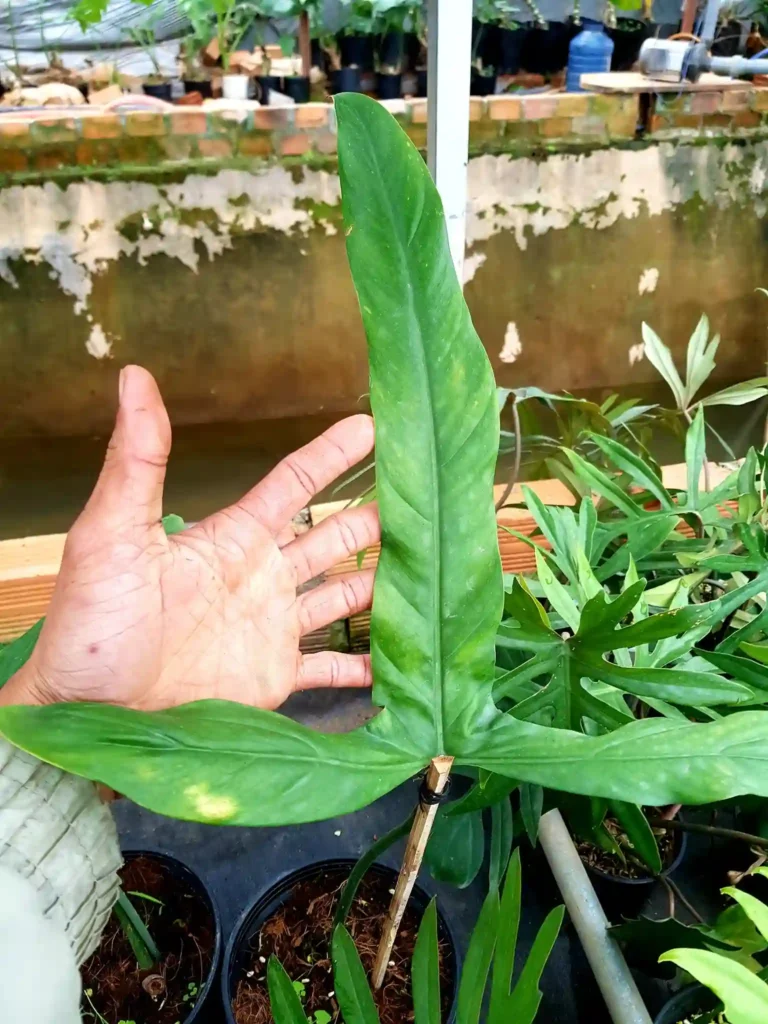
What is Peperomia Turboensis?
Hi, Ferb Vu here, and today we’re diving deep into the world of the Peperomia Turboensis, a plant that’s as captivating as its name. This little gem, native to the lush rainforests of Colombia, boasts stunning foliage that shimmers with a metallic sheen, making it a true conversation starter in any indoor space.
But beyond its dazzling appearance, the Peperomia Turboensis offers a delightful challenge for plant enthusiasts. It thrives under specific conditions, requiring a keen eye and a gentle touch. So, buckle up as we explore the fascinating world of this unique Peperomia!
1424 Species in Genus Peperomia
How to care for Peperomia Turboensis?
Light: Let There Be (Indirect) Light
Imagine the Peperomia Turboensis basking under the dappled sunlight filtering through the rainforest canopy. That’s the kind of light it craves in your home. Bright, indirect light is key. Direct sunlight can scorch those beautiful leaves, leaving unsightly burns.
East or north-facing windows are ideal spots. If you have a south-facing window, consider filtering the light with a sheer curtain. Remember, with Peperomia Turboensis, indirect is the golden rule.
Water: Finding the Perfect Balance
Watering is where the magic happens (and sometimes goes wrong) with the Peperomia Turboensis. It prefers consistently moist soil, but not soggy. Think of a damp sponge you can gently squeeze without water dripping out. That’s the sweet spot.
Here’s my trick: Stick your finger into the soil about an inch deep. If it feels dry, it’s watering time. Aim for thorough watering until water trickles out the drainage holes. Discard any excess water in the saucer to prevent root rot.
Remember, underwatering is better than overwatering. A thirsty Peperomia Turboensis will show its displeasure with wilting leaves, but it can bounce back. Overwatering, however, can lead to mushy leaves and a sad demise – something we definitely want to avoid.
Humidity: Mimicking the Rainforest
The Peperomia Turboensis hails from a humid environment, so replicating that in your home is crucial. Ideally, aim for 50-70% humidity. If your home tends to be dry, there are ways to create a mini-oasis for your plant:
- Pebble tray: Place your Peperomia Turboensis on a tray filled with pebbles and water. As the water evaporates, it increases humidity around the plant.
- Grouping plants: Clustering your Peperomia Turboensis with other humidity-loving plants creates a microclimate that benefits everyone.
- Humidifier: For a more permanent solution, consider a humidifier to maintain consistent humidity levels.
Soil: The Foundation for Growth
The Peperomia Turboensis thrives in a well-draining, airy potting mix. Opt for a mixture specifically formulated for houseplants or cacti. You can also create your own by combining equal parts potting soil, perlite, and orchid bark. This ensures proper drainage and prevents waterlogging.
Fertilizer: A Light Touch
The Peperomia Turboensis is not a heavy feeder. A balanced, diluted liquid fertilizer applied once a month during the growing season (spring and summer) is sufficient. During the winter months, you can hold off on fertilization altogether.
Common Problems and Solutions
Brown leaves: This can be caused by underwatering, overwatering, or sunburn. Check your watering habits and adjust accordingly. Move the plant away from direct sunlight if necessary.
Wrinkled leaves: This usually indicates underwatering. Give your plant a thorough watering and it should perk up soon.
Leggy growth: This is a sign of insufficient light. Move your Peperomia Turboensis to a brighter spot with indirect light.
Peperomia Turboensis vs. Other Peperomias
There are over 1,000 varieties of Peperomia, each with its own unique charm. Here’s a quick comparison of the Peperomia Turboensis with two popular cousins:
Peperomia Obtusifolia (Baby Rubber Plant): Shares a love for indirect light. Requires less humidity than the Turboensis. Has thicker, glossier leaves.
Peperomia Watermelon: Features stunning, variegated leaves with green and silver markings. Prefers similar watering habits as the Turboensis. Needs slightly more humidity than the Obtusifolia.
Conclusion: The Reward is Worth the Effort
The Peperomia Turboensis may require a bit more attention than your average houseplant, but the rewards are truly remarkable. Its shimmering foliage adds a touch of glamour to any space, and with proper care, it can thrive for years to come. So, if you’re looking for a plant that’s both beautiful and rewarding, the Peper
If i die, water my plants!



